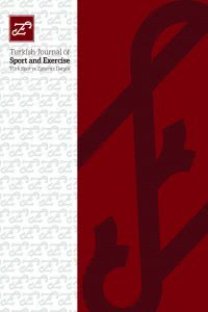New technologies for motor didactics
___
1. Antinucci F. La scuola si è rotta, Laterza, Bari, 2001.2. Bandura A. Social learning theory, Prentice Hall, Upper Saddle River, New Jersey, 1977.
3. Bosio P, Menegoi Buzzi DI. Scuola e diversità in Europa. Strumenti per la formazione dei docenti sull’integrazione dei disabili in Europa, Milano, Franco Angeli,2005
4. Bruner JS. The culture of education, Harvard University Press, Cambridge (Mass.) – London, 1996.
5. Bruner J. La ricerca del significato. Per una psicologia culturale, Bollati Boringheri, 1992.
6. Calvani A. Costruttivismo, progettazione didattica e tecnologie, in D. Bramanti (a cura di) Progettazione formativa e valutazione, Carocci, Roma, 1998.
7. Carassa A, Morganti F, Tirassa M. A situated cognition perspective on presence. In B. Bara, L.W. Barsalou, M. Bucciarelli(Eds.), XXVII Annual Conference of Cognitive Science Society. Alpha, NJ: Sheridan Printing, 384-389, 2005.
8. Carassa A, Morganti F, Tirassa M. Movement, Action, and Situation:Presence in Virtual Environment. In M. Alcaniz Raya, B. Rey Solaz (Eds), Seventh Annual International Workshop Presence 2004. Valencia UPV,7-12: Editorial, 2004.
9. Gardner H. Intelligenze multiple, Anabasi, Milano, 1994.
10. Gibson JJ. The ecological approach to visual perception, Houghton Mifflin, Boston, 1979.
11. Hughes M, Lipoma M, Sibilio M. La performance analysis. elementi di base ed aspetti applicativi in campo educativo ed integrativo. Milano: Franco Angeli, 2009.
12. Lodrini T. Didattica costruttivista e ipermedia, F. Angeli, Milano, 2002.
13. Machlup F. The Production and Distribution of Knowledge in the United States, Princeton: Princeton University Press, 1962.
14. Morganti F, Riva G. Conoscenza, comunicazione e tecnologia,Milano: LED Edizioni Universitarie, 2006.
15. Novak J. L’apprendimento significativo, Erickson, Trento, 2001.
16. Puglisi F. Biomeccanica introduzione alle misure strumentali di postura e movimento, Roma, Marrapese, 2007.
17. Riva G. Psicologia dei nuovi media,Il Mulino, Bologna, 2008.
18. Tarr MJ, Warren WH. Virtual Reality in behavioral neuroscience and beyond, Nature Publishing Group, 2002.
19. Varisco BM. Alle radici dell’ipertestualità, in A. Calvani e B.M. Varisco (a cura di), Costruire/decostruire significati, CLEUP, Padova, 1995.
20. Varisco BM. Costruttivismo socio-culturale, Carocci, Roma, 2002.
21. Vigotskji LS. Il processo cognitivo, Boringheri, Torino, 1980.
22. Villani D, Grassi A, Riva G. Tecnologie emotive: nuovi media per migliorare la qualità della vita e ridurre lo stress, LED, Milano, 2011.
23. Wenger E. Communities of practice. Learning meaning and identity, New York: Cambridge University Press, 1998.
24. Wiederhold BK, Widerhold MD. Virtual Reality Therapy for Anxiety Disorders, Advances in Education and Treatment. American Psychological Association Press, New York, 2004.
- ISSN: 1300-9915
- Yayın Aralığı: 1
- Başlangıç: 2018
- Yayıncı: -
Drop sıçramada optimal platform yüksekliğinin belirlenmesi
TÜLİN ATAN, M. Yalçın TAŞMEKTEPLİGİL, Seydi A. AĞAOĞLU, MENDERES KABADAYI, ÖZGÜR BOSTANCI, OSMAN İMAMOĞLU
Antinea AMBRETTI, Filippo PALOMA GOMEZ, Nadia CARLOMAGNO, Raffaele PROSPERİ, Maurizio SIBILIO
New technologies for motor didactics
Nadia CARLOMAGNO, Stefano TORE DI, Rosa SGAMBELLURİ, Veronica FRAGNITO, Filippo PALOMA GOMEZ
AYŞEGÜL ŞÜKRAN ÖZ, HÜSEYİN KIRIMOĞLU, Ali TEMİZ
Hakan Salim ÇAĞLAYAN, Mehmet Çağrı ÇETİN, YUNUS YILDIRIM, Özer YILDIZ
Yağlı güreşlere yönelik tutum ölçeğinin geliştirilmesi
HAKKI ULUCAN, A. Emre EROL, FATİH BEKTAŞ, İdris YILMAZ
Submaksimal efor sırasında farklı tip müziğin bazı fizyolojik parametreler üzerine etkisi
Haluk KOÇ, Turchian CURTSEİT, HÜDAVERDİ MAMAK
MUSA ÇON, MEHMET YAZICI, M. Yalçın TAŞMEKTEPLİGİL, Kazım BIYIK
